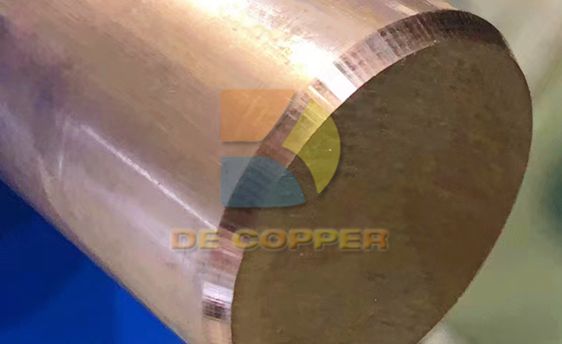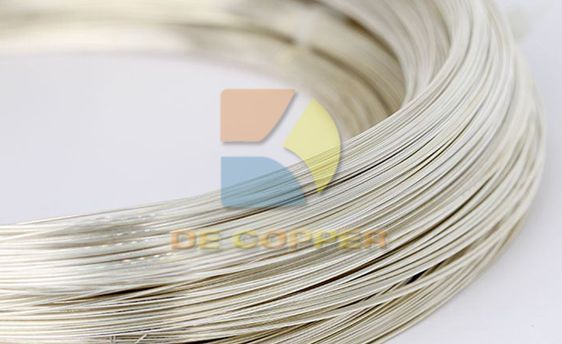close
Choose Your Site
Global
Social Media
Views: 0 Author: Site Editor Publish Time: 2025-07-14 Origin: Site

Bronze has been essential for millennia, but how is it used today? This alloy revolutionized early civilization with its strength and versatility.
In this article, we will explore how bronze remains relevant in modern industries. We’ll discuss its composition, key properties, and common applications that continue to shape the world today.
Bronze is an alloy primarily made of copper and tin, with the tin content typically ranging between 5% to 20%. This combination enhances the alloy's durability, strength, and resistance to corrosion. Bronze can also contain other elements, such as aluminum, phosphorus, and silicon, to modify its properties for specialized applications. For example:
● Aluminum Bronze: Contains aluminum, offering increased corrosion resistance and strength, often used in marine hardware and military equipment.
● Phosphor Bronze: Known for its excellent fatigue resistance, used in electrical components and precision engineering.
● Silicon Bronze: Offers superior corrosion resistance, making it ideal for artistic applications, tools, and construction.
Bronze is renowned for its excellent properties, which make it highly useful in various industries. These include:
● Durability: Bronze is incredibly durable, able to withstand harsh environments without deteriorating quickly.
● Corrosion Resistance: One of the most valued characteristics of bronze, making it suitable for marine, industrial, and outdoor applications.
● Malleability: Bronze is relatively easy to work with, allowing it to be shaped into various forms without compromising its strength.
These key properties ensure bronze remains relevant in modern applications ranging from tools and machinery to art and architecture.
Bronze is widely used in industries that demand materials resistant to corrosion and wear. For example:
● Aerospace: Bronze alloys are used for manufacturing components that need to withstand extreme temperatures and stresses.
● Shipbuilding: Due to its resistance to saltwater corrosion, bronze is commonly used for marine components like propellers and rudders.
The strength, corrosion resistance, and durability of bronze make it a go-to material in many industrial settings.
Bronze is particularly effective in reducing friction, making it ideal for bearings, bushings, and gears. These components help to maintain machine efficiency by minimizing wear and tear. Bronze’s low friction, combined with its strength, makes it a suitable material for these friction-heavy applications.
Bronze is often used in electrical components like connectors, switches, and contacts. Its high electrical conductivity allows it to carry current efficiently, making it vital in industries requiring reliable electrical connections, such as telecommunications, manufacturing, and energy production.

Throughout history, bronze has been used in the creation of sculptures and statues, from ancient works like the Statue of Liberty to modern public art. Its durability, ability to hold intricate details, and resistance to corrosion make it an ideal choice for sculptures displayed outdoors or in harsh environments.
Bronze continues to play a role in architecture, where it is used for decorative elements such as facades, cladding, and trim. Its combination of beauty and functionality allows it to remain popular in both modern and historical architecture.
Bronze’s contribution to history can also be seen in artifacts and coins. Many civilizations used bronze to mint coins or create cultural artifacts that are still treasured today. Bronze was a primary medium for craftsmanship, leading to the discovery of artifacts that reveal ancient societies' technological advancements.
Bronze plays a crucial role in the marine industry due to its remarkable corrosion resistance, particularly in saltwater environments. Components like propellers, rudders, and various fittings must endure constant exposure to seawater, which can rapidly deteriorate many metals. Bronze's unique composition, which often includes copper and tin, provides exceptional resistance to corrosion, making it the preferred material in shipbuilding. The longevity of bronze in marine applications reduces the need for frequent maintenance and replacement, making it both cost-effective and efficient for the shipping industry. From large cargo ships to luxury yachts, bronze's durability ensures that it continues to be a trusted material for vital marine components, enabling safer and more reliable operations on the open seas.
In aerospace, bronze is an essential material for ensuring the performance and safety of aircraft. Components such as bearings, bushings, and structural parts rely on bronze's ability to withstand extreme temperatures, high pressures, and mechanical stress. Whether used in engines, landing gear, or flight control systems, the alloy's resistance to corrosion and wear ensures long-term reliability in the demanding conditions of flight. Moreover, bronze’s excellent machinability and ability to maintain its strength at elevated temperatures make it a material of choice for critical aerospace applications. As aerospace technology advances, the role of bronze in supporting high-performance, lightweight, and durable components remains vital, contributing to the overall safety and efficiency of the industry.
The future of bronze looks promising as new alloys are developed to enhance its properties further. Advanced bronze alloys with better corrosion resistance, strength, and other enhanced characteristics are being explored for use in modern applications such as renewable energy, robotics, and advanced machinery.
Bronze’s ability to be recycled is a key factor in its continued relevance in modern manufacturing. By recycling bronze, industries can reduce environmental impact while maintaining a supply of durable materials. This sustainability aspect makes bronze a preferred material in eco-conscious industries.
Bronze is finding new uses in emerging technologies like robotics, green energy, and high-tech equipment. As these technologies evolve, the demand for bronze, particularly its alloys, is expected to increase in areas requiring durable, corrosion-resistant materials that can perform under extreme conditions.
Aluminium bronze, with its enhanced corrosion resistance and strength, is used in marine hardware, military equipment, and high-performance machinery. Its resistance to both oxidation and wear makes it highly durable in demanding environments.
Phosphor bronze is favored for its strength, fatigue resistance, and elastic properties, making it ideal for precision engineering, electrical components, and springs that require durability and reliability.
Silicon bronze is widely used in construction, artistic applications, and tools due to its superior corrosion resistance. It is particularly popular for creating sculptures, hardware, and outdoor structural components.
Bronze Type | Applications | Key Characteristics |
Marine hardware, military equipment | Corrosion resistance, strength | |
Phosphor Bronze | Electrical components, precision engineering | Hardness, fatigue resistance |
Silicon Bronze | Construction, art, tools | Corrosion resistance, durability |

Bronze continues to be a crucial material in modern industries, from manufacturing to art. Its unique properties, including strength and corrosion resistance, keep it valuable in both traditional and modern applications. With its ongoing impact on engineering, art, and manufacturing, bronze remains essential today.
A: Bronze is widely used in shipbuilding, manufacturing, art, and electrical components, due to its durability and corrosion resistance.
A: Yes, bronze is suitable for high-temperature applications like industrial machinery and aerospace due to its strength and thermal stability.
A: Bronze has superior corrosion resistance, particularly in marine and industrial environments, outperforming many other metals like steel.
A: Yes, bronze is still used for minting coins due to its durability, corrosion resistance, and aesthetic qualities.
A: Bronze is valued for its aesthetic appeal, durability, and ability to withstand the elements, making it ideal for sculptures and architectural features.